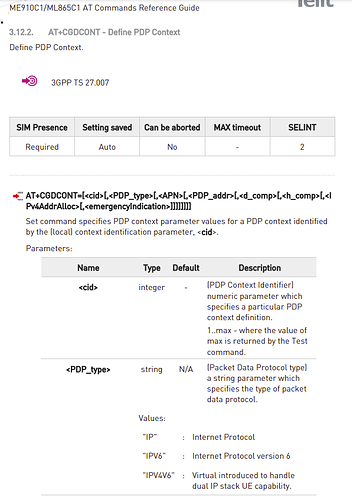To be 100% clear about this:
The reason for the “Unknown” LTE Active LTE Technology" error message on connect.sixfab.com is due to a bug in your system.
There are a few issues with the default settings for the Sixfab " Raspberry Pi Cellular IoT Kit (LTE-M)" Kit as currently sold.
#1 - It does not init the modem to use GSM with the ME910C1 by default as it should (At least in the USA Versions) . This causes the Modem to report as “Unknown Active LTE Technology” on your connect.sixfab.com monitoring site.
The End User needs to init GSM using AT+WS46=12 in a Miniterm session to enable GSM.
This is a more problematic issue than Sixfab is taking responsibility for, as due to this bug on your side, the end user thinks the system is not connected to any cellular system and (as has been reported) will use up their data limits thinking they are connected via some other port (eth,wlan…)
#2 - The current configuration tutorials are written for the LE910x series modems with more USB Ports than the ME910C1. This is huge issue by Sixfab, as the users end up thinking something is wrong with their systems because what they see on their monitors does not match what the “Official Sixfab” tutorials are showing them to expect.
#3 - The current installation system does not disable the failed/unimplemented IPv6 System by default.
IPv6 has been completely abandoned by most/all Cellular carriers for iot devices, and leaving it enabled causes huge delays in internet communications with the cellular systems. Traceroute/ping times are influenced by over 800% delays because of this, as are normal internet traffic.
#4 - Power draws of the Cellular Hat exceed the amperage availabilities of the current model Raspberry Pi systems, and there is no “As-Provided” way to externally power the Hat.
If a Raspberry Pi is equipped with even the most basic Official Raspberry Pi options (Modular Camera, I2C device powered by Raspberry’s 40 Pin Header, etc), the Hat overdraws the available 5VDC 3Amp Power Supply and the end user has to add an additional Non-USB-C header and power supply.
This makes development systems very problematic as there needs to be two different types of power supplies on the system. Why is there not two USB-C Ports, one for Power Only and another for communications to the Raspberry Pi?
With only one USB-C port on the Hat, no one can implement a single “wall-wart” plug with dual 3Amp outputs and have one 3Amp output running the Pi and the other running the Sixhat.
If the Sixhat had two USB-C connectors, the 2nd one could connect to the Pi for communications and not draw power from it, thus solving the amperage overdraw/low-power alarms on the Pi.



